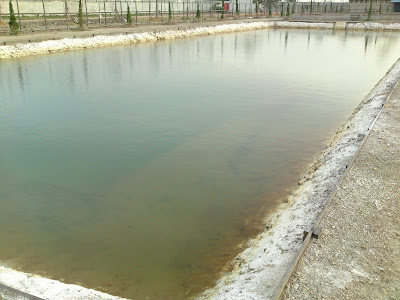
Do you know what is the best tank for our fishes?
The answer is depends on the situation because the collector usually wanted a big tank which can make our fish looks more beautiful. but, there are many advantages if we use a small tank.
- Arowana will have a small body, but a kind of arowana like that is cute if we see it carefully. their scale is getting bigger but, because of the environment of the tank, this arowana may has a short body and big scale. like mine on the home page.
- the bigger tank we have, the bigger water we needed. so if you life in the small town, you can choose the small tank and bring it in front of your house and it will be very nice to see
About Choosing an Aquarium Location
It is a giant pain to move a fully set up aquarium, even a few inches. Once your aquarium is set in place, it is highly unlikely you will be be moving it, so placement considerations are very important. Measure areas that will allow for the tank. Keep in mind that you will need sufficient space or access around the tank for cleaning/maintenance, and don't forget to take into consideration where your electrical outlets are. Make sure to pick a spot where direct sunlight will not shine on it, especially in the hot summer months. You will probably want to place the tank where it can be easily seen and enjoyed from the sitting areas in the room. A number of people make their aquarium the primary focal point of the living room, and the television secondary. Some people are concerned about the effect the weight of a tank and water will have on the floor structure in the room. Even a 55 gallon tank weighs about the same as two adult men, so if you don't feel comfortable with two of your heftier friends standing next to each other in the middle of your living room floor, place the tank against a "bearing wall" (usually an outer wall). That's the strongest part of the floor.
Some people install their tanks "inside" the wall. Impressive, but make sure that you really want to make the long term commitment before you start making structural changes to your home. Now, if you are in the process of building your own home, an in-wall set up is something to consider and can easily be incorporated into the house blue prints before construction, rather than having to tear a wall out after the house is built. If you are renting your home, check with your landlord before spending any money on an aquarium set up. We had a "no pets in the house" clause in our lease, so for many years we couldn't have a tank inside, but our landlord did give us permission to keep 2,500 gallons in various systems outside.
The decision on where the aquarium is going to be placed often goes hand-in-hand with what size tank you will buy, because of the available space you may or may not have.
Acrylic or Glass?: The dilemma of aquarium materials
I often get questions from aquarists asking me what the best aquarium material is. This is inevitably due to the growing interest of building one's own aquarium. The bottom line is that there are two major materials which are generally used to make aquariums - glass and acrylic. So, which is better? The truth is that "it depends". In this article, I will give a brief list of the pros and cons or each, from which you should be able to determine what would be the better for you.
I will begin with glass. Glass is by far the most popular of the two materials. This is mainly due to cost. Relative to acrylic aquariums, glass is cheaper. Glass aquariums are held together by silicone sealant, which allows for a strong bond and more importantly, expansion when the aquarium is filled with water. In addition, glass aquariums are very scratch resistant, thus preserving the clarity of the aquarium sides.
The down sides of glass aquariums are basically the positive sides of acrylic. First, unlike glass, acrylic allows for a large number of shapes and sizes of aquariums. Thus, if you have a non-standard shape in mind, acrylic might be for you. In addition, acrylic allows for easy adjustments for filtration feed throughs. When one wishes to do the same for glass aquariums, special tools are needed to cut the glass so that it doesn't crack.
This brings me to the next point. In places, such as bars or other public areas, acrylic is by far the better choice. Glass has little resistance to the occasional bump, and thus poses a great amount of liability. Acrylic, however, can withstand many bumps and bruises without cracking. Acrylic is also lighter than glass. This is more important for larger aquariums, which can easily get very heavy.
So why is glass so popular? For two reasons: it is cheaper, and it is very scratch resistant, unlike acrylic. Removing scratches from acrylic can be a little tough, and requires sanding with decreasing grades of sand paper. Most aquarists don't require odd shaped aquariums, and are not worried about public display liabilities - thus, they choose glass. Those who require odd shapes, or are planning on displaying the aquarium publicly tend to go with acrylic.



















